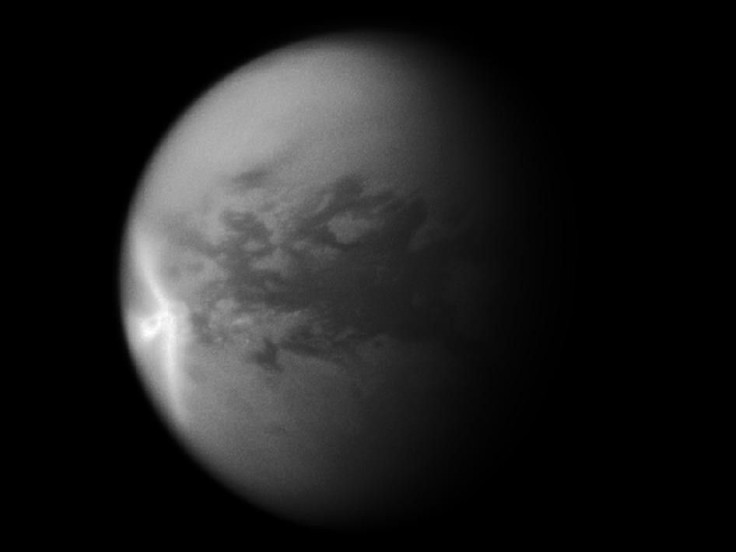Saturn's Great White Spot Storm Rages Across Planet

In what started as just a small dot on Saturn's northern hemisphere has now evolved into what some scientists call a one-of-a-kind storm.
The dot, which transformed into a Great White Spot storm, has created incredible turbulence and lighting flashes on Saturn, some of which are thousands of times more powerful than lightning on Earth. Not only is the lighting more powerful, it will also last for a much longer time period, according to research published in the Nature Journal.
Saturn can experience thunderstorms for days at a time, while usually Earth storms only last for a few hours.
The Cassini-Huygens mission, a joint effort by NASA, the European Space Agency, and the Italian Space Agency, first detected the activity in December 2010. But even into early July, the action on Saturn has yet to subside.
It's still going like crazy, Cassini project scientist Linda Spilker of the NASA Jet Propulsion Laboratory told the Associated Press.
When first discovered, the activity was just a fraction of the massiveness it is today. Recent data shows the storm now covers approximately 1.5 billion square miles, which is about eight times the size of Earth.
To those unfamiliar with Saturn, big thunderstorms and lightning might seem commonplace. But Saturn has actually been void of major turbulences like this, registering only five of this magnitude since scientists began following the planet.
This is a one-of-a-kind storm, said Andrew Ingersoll of the California Institute of Technology. Saturn is not like Earth and Jupiter, where storms are fairly frequent. Weather on Saturn appears to hum along placidly for years and then erupt violently.
One of the biggest mysteries is how do thunderstorms like this one get so big and powerful? Conventional wisdom in the past suggested that the Sun might be primarily responsible, but new research suggests that might not be right in this instance.
Recent Cassini evidence shows that in order for the storm's cloud patterns to make sense, winds must extend deep into the 'weather layer' - a 250-kilometer-thick [155 miles] layer where the main clouds reside, where sunlight does not arrive, researcher Agustin Sánchez-Lavega told Space.com.
This points to the action of an internal heat source as the power for the winds, he said.
As to what might be causing that internal heat is not known at this time, though the Cassini team undoubtedly will be working hard to find out.
© Copyright IBTimes 2024. All rights reserved.





















